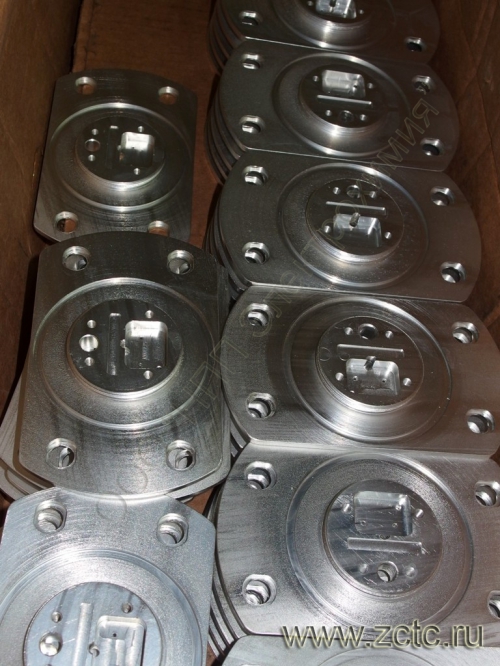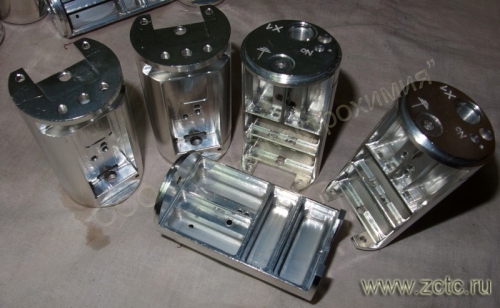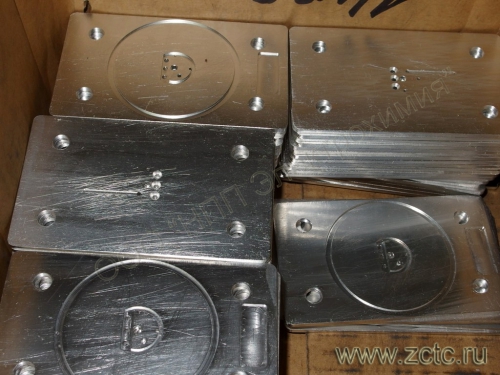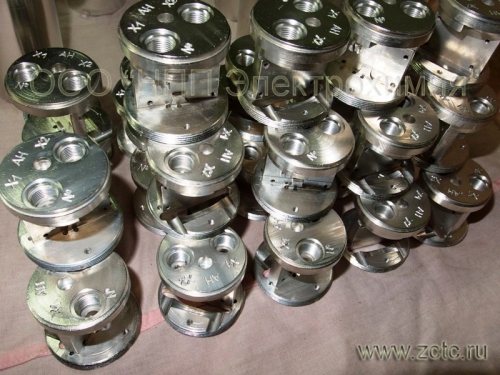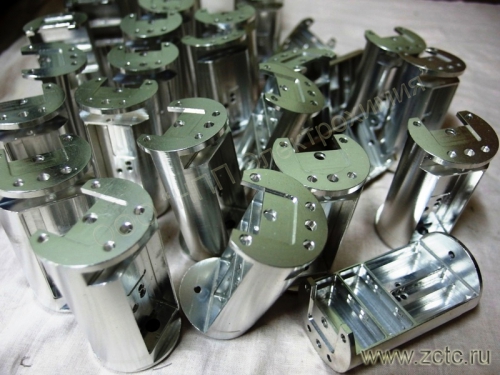MULTILAYER TINNING ALUMINUM WITH A SUBLAYER OF NICKEL AND COPPER. BRILLIANT
Description
The main purpose of a multilayer coating on aluminum is to protect parts from corrosion. This is mainly required in instrument making and electrical engineering. The coating is a “pie”, where the technological sublayer is adjacent to the base, then comes nickel, copper and tin-bismuth, which is in contact with the working environment. The effect is achieved with a total thickness of only 12 microns. In a simpler version, a two-layer coating can be made separately with nickel or separately with copper.
Multilayer coatings, unlike single-layer ones, almost non-porous. This is why the corrosive environment cannot reach the zincate technological sublayer. Interlayer corrosion along the zincate sublayer, which is anodic to both aluminum and the overlying nickel, is eliminated. The parts are not destroyed, and the coating itself does not peel off over time. Note that the danger of small pores is higher than large coating defects.
It is important to settle the coating so that secondary porosity or cracking does not develop during storage and further use. These phenomena can occur with aging or exposure to temperature.
Another task of a multilayer tin-bismuth coating is ensuring solderability. There is experimental data that when soldering body parts, the temperature is better distributed over the multilayer coating.
Multilayer tin-bismuth coating is much more shiny and gives a beautiful appearance to parts, which is important, for example, when manufacturing products for export.
Finally, tin-bismuth insulates the aluminum surface when in contact with copper parts.
You can order shiny multilayer tinning of aluminum with a tin-bismuth alloy in accordance with GOST 9.305-84 by phone and email specified in the section "CONTACTS".
Characteristics
|
Designation (example) |
Ni-Cu-Sn-Bi |
|
Thickness |
3-100 microns (greater thickness is possible) |
|
Microhardness |
118-198 MPa |
|
Electrical resistivity at 18° C |
11.5⋅10-8 Ohm⋅m |
|
Permissible operating temperature |
200° C |
|
Bismuth content in Sn-Bi alloy |
0.2-2% |
Advantages of tin plating:
- A multilayer tin-bismuth coating, given its non-porous nature, resists interlayer corrosion much better than a single layer. Allows you to maximize the corrosion resistance of finished products. An increase in corrosion resistance is also achieved by using a shiny tin coating instead of a matte one, which is explained by its lower porosity;
- Provides solderability. A shiny coating retains solderability for a longer time than a matte coating. Alloying the coating with bismuth allows it to maintain solderability for longer than 1 year;
- Resistant to sulfur-containing compounds and recommended for parts in contact with all types of plastics and rubbers;
- The coating is well preserved when screwed together;
- Doping with bismuth prevents the formation of conductive crystals ("needles") on the surface of the coating during storage, which is typical for a simple tin coating;
- Alloying the coating with 0.5-2% bismuth allows you to avoid destruction of the coating during operation below minus 30°C. The destruction of tin coatings WITHOUT bismuth occurs due to the transition of compact white tin (β-Sn) to powdery gray tin (α-Sn) (“tin plague”).
Disadvantages of tin plating:
- Low wear resistance;
- Insufficient ductility compared to tin-lead and lead. The nickel sublayer is not elastic and does not withstand bending, drawing, flaring, stamping, or press fit;
- Lower anti-friction properties compared to tin-lead and lead;
- The presence of bismuth in the composition does not allow the coating to be used for food purposes.

Do you want to become our client?
Just leave your request by filling out the form on the right and we will contact you as soon as possible. Thank you!

By submitting an application, you agree to processing of your personal data. Your data is protected.





